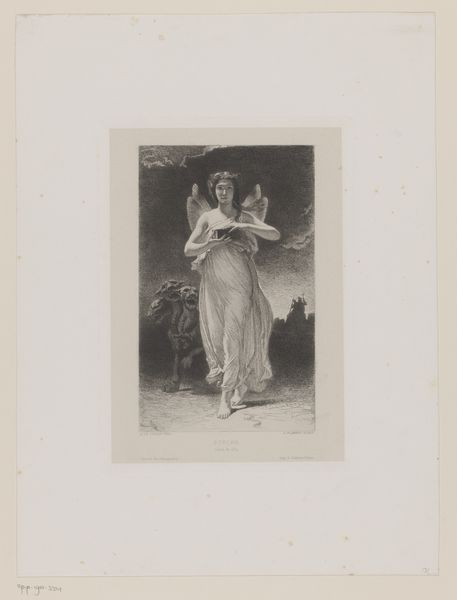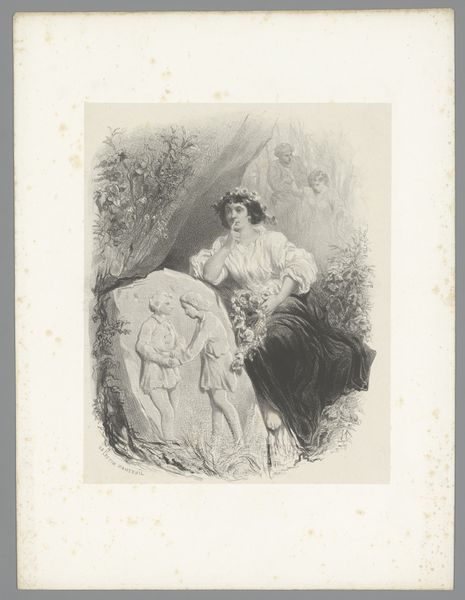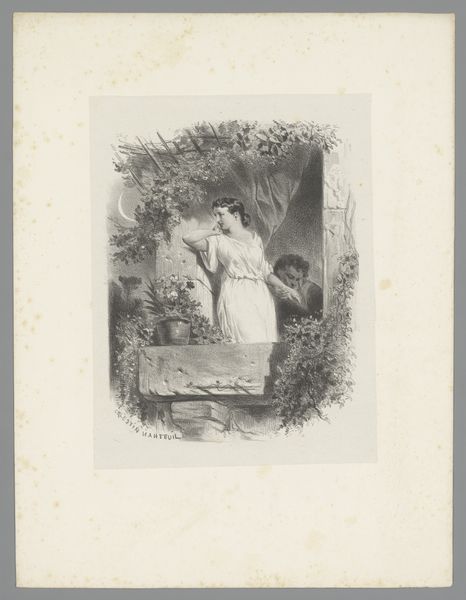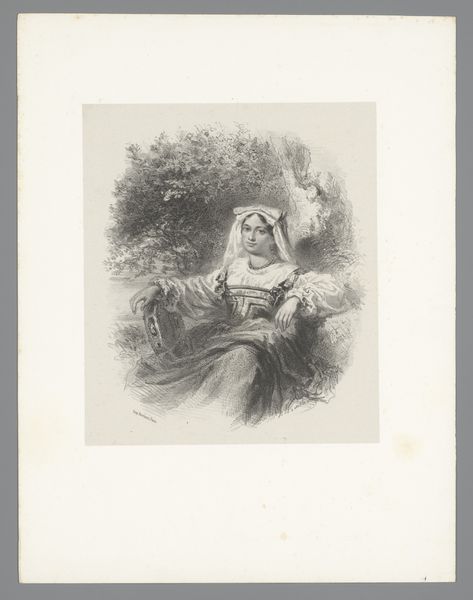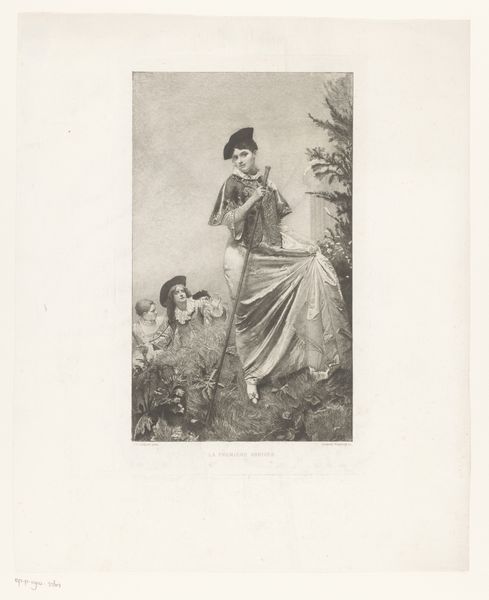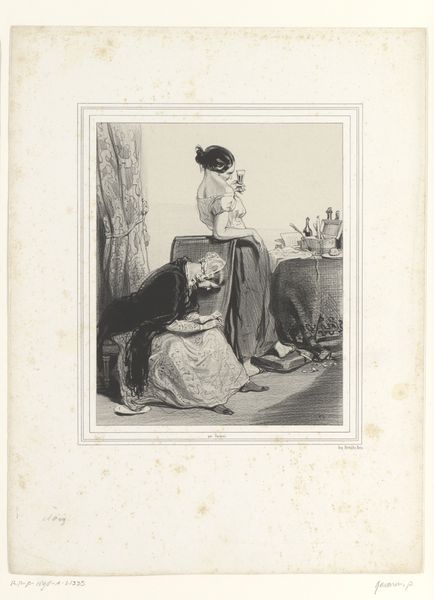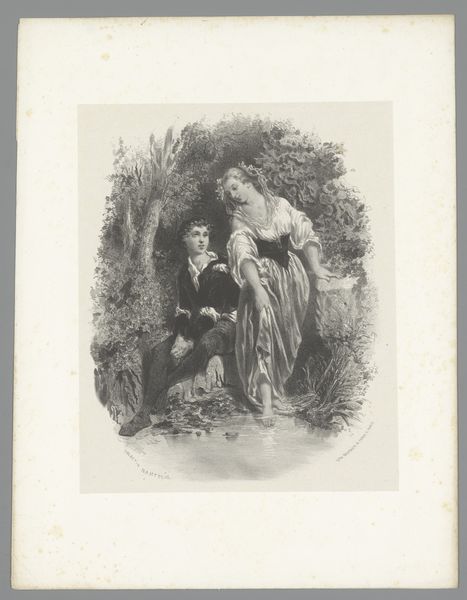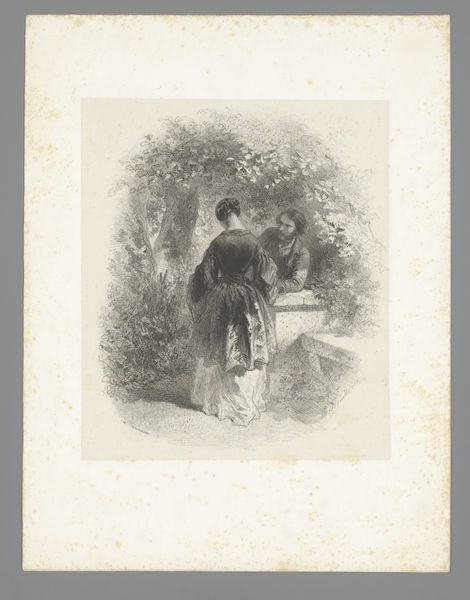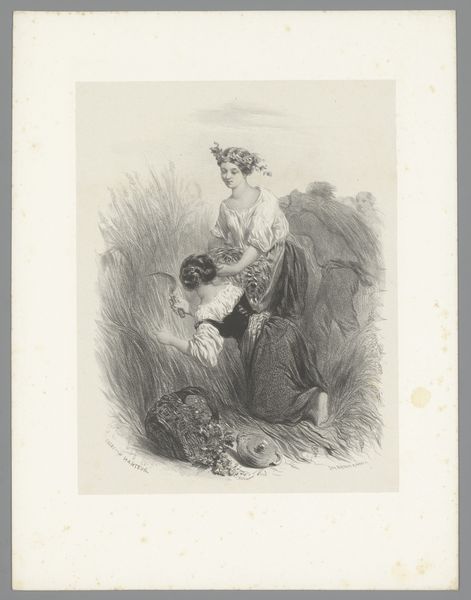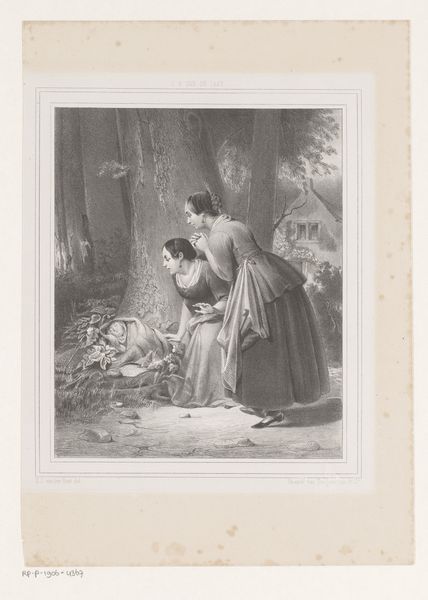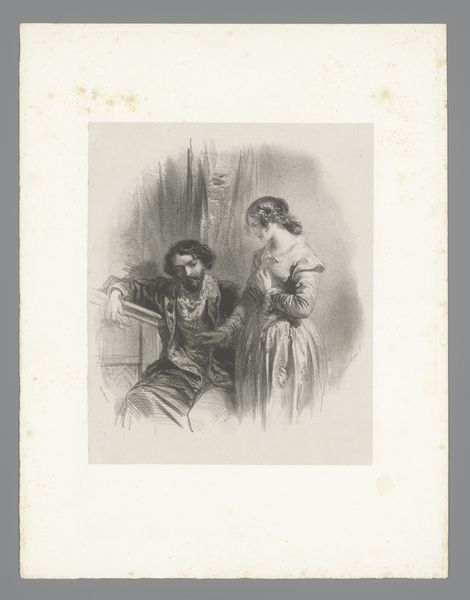
drawing, print, engraving
#
drawing
# print
#
landscape
#
flower
#
figuration
#
column
#
romanticism
#
engraving
Dimensions: height 360 mm, width 278 mm
Copyright: Rijks Museum: Open Domain
Curator: This is a piece titled "Vrouw strooit bloemen bij een zuil," depicting a woman scattering flowers at a column. It's attributed to Célestin Nanteuil, dating from between 1823 and 1873, created through engraving. Editor: It feels melancholic. The somber palette of the engraving and the woman’s posture definitely evoke a sense of mourning or quiet reflection. There's a heavy presence of decay with the vines and damaged state of the column, as well as a romantic aesthetic through the dress. Curator: Indeed. Consider the Romantic era's preoccupation with death, remembrance, and the idealized feminine form. This image presents an interesting interplay. The act of scattering flowers, typically associated with mourning or memorializing, is carried out by a woman, likely intended to represent innocence and purity. Her action connects her to cycles of loss. Editor: It brings to mind how the representation of mourning and women’s expression has evolved due to specific materials available for mourning clothes during industrialization, impacting not just fashion but also social roles and expectations around women's displays of emotion. Looking closely at the column's state, you see it is partially in ruins. We can perhaps consider themes around power, ruin, memory, or nostalgia, especially considering how those notions were used during periods of sociopolitical instability. Curator: Precisely, the crumbling column invites commentary on power and social order. What once stood tall now shows fragility; perhaps Nanteuil suggests that like flowers, societies and institutions decay. And as material things are being destroyed, can we ask whose loss is truly being mourned? Is it a call to recognize the interconnectedness of loss, be it personal, structural, or even environmental? Editor: Definitely, the materials here amplify the sentiment. Engraving, which uses laborious hand work, offers detailed contrast in tonal grays reflecting light on the surface and is also highly reproducible. It's not necessarily about uniqueness but availability to spread social themes of memorial or romanticized visions of loss for the popular reader. Curator: Viewing this engraving, I'm drawn to think of it less as a simple memorial scene, but more as a statement on ephemeral beauty within wider social and political tensions of the nineteenth century. Editor: Absolutely, seeing the print with all its crafted lines does underscore how much is embedded in seemingly simple images of loss.
Comments
No comments
Be the first to comment and join the conversation on the ultimate creative platform.
